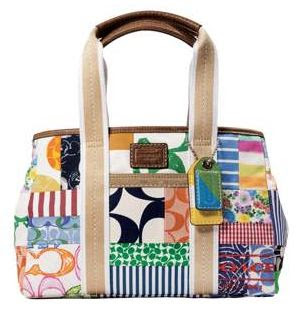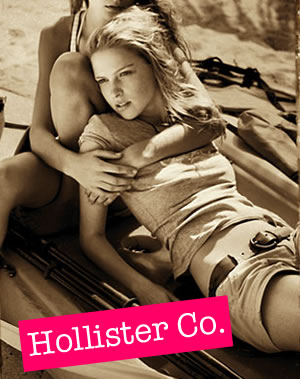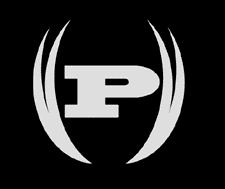



You would not think anyone would hassle to make pretend COACH bags as a result of the originals are comparatively inexpensive - at least compared to different high-style luggage comparable to Prada, LV, etc. But as you realize, people will do something to make a quick buck. Faux COACH luggage are a bit of troublesome to spot, but here are some tips based on my private experiences and observations:
Please notice: I'm not affiliated with Coach - I just love their products and hate to see folks get taken advantage of...
Images: Also please be aware that the photographs you see to the correct are usually not my pictures - they are listings from other eBay sellers - so they may or will not be authentic. I have no management over what listings appear there - eBay chooses them primarily based on the content material of this information - i.e. relating to coach purses and wallets.
1. Signature cloth: The "C" sample can be crooked. Except for some newer patterns, like the "optic" or my new favorite "scarf print," the tip of the horizontal "C" going through the other "C" ought to touch. Also, the sample should line up and start within the middle of the front panel of the bag (same with the back panel). The center seam should go straight down by means of the center of the CC's, and the sample should be aligned horizontally and vertically. Also, the pattern ought to line up on any front or again pockets, so that it looks like there isn't any break within the pattern. (Note: Sometimes the pattern does not line up on facet seams as this is practically unimaginable to do.) The best way to tell is to go to the COACH website and take a look at the real thing, after which examine it to what you're looking at on eBay and see if the sample is different.
2. Typically the "CC" will truly be a "GG" - how rather more obvious are you able to get! And no, this doesn't imply it's a Gucci! (I am not as accustomed to Gucci merchandise, but when someone is selling you a "COACH" bag which is imprinted with the letter "G" then logically it must be fake.)
3. The stitching or general building of the bag appears sloppy - it is a sure signal as a result of COACH doesn't make sloppy merchandise! Every sew must be the same size as each other stitch, it needs to be in a straight line, and there ought to be no "over-stitching".
4. The bag does not seem like another bag you've ever seen - if it seems "form of" like a bag you've seen but something is "off" - watch out!
5. Replicas: The seller is listing an unusually large number of the identical exact bag. It is a purple flag as a result of there are web sites the place you can purchase good-high quality replicas, and I've seen these replicas listed on eBay claiming to be authentic. Notice that replicas are usually made of material, as leather is more expensive and due to this fact all-leather luggage are much less prone to be fake. (However, I've seen pretend Coach luggage fabricated from all-leather. The all-leather fakes are usually very simple to spot - i.e. the standard of the leather is VERY poor, the fixtures are all fallacious, etc.)
6. Photographs: Watch out for blurry pictures or inventory photos (a stock photo is one that has been minimize-and-pasted from the COACH website, often with a white background) - this doesn't necessarily mean the bag is faux, however for those who see either of a lot of these images, I might contact the vendor and ask if they'll ship you a photograph of the actual merchandise they're selling.
7. Authenticity: Take notice if there may be completely no point out that the bag is genuine! In that case, ask the vendor to confirm that they are providing an genuine product. In the event that they fail to respond to your request, this may be an indication that they don't want to incriminate themselves. But be careful! Just because the seller claims it's authentic does not mean that it is.
8. Credo Patch: Most COACH bags have a "serial number" stamped on the inside, on a sq. patch of leather-based sewn into the lining. A number of the smaller purses (the "clutch," the "swingpack" and the "mini") do not have a serial number. The serial quantity sometimes consists of a sequence of numbers or a number-and-letter combination. The final 4-5 digits of the serial quantity indicate the type number of the bag. Cautious, though, as fake COACH luggage also have a serial quantity - so simply because the bag has a serial quantity does NOT imply the it is authentic.
**UPDATE** If the patch is just not stamped - in other words, embossed into the leather-based - however is just printed in ink - beware! The one baggage I've seen with the credo patch printed in ink are the newer traces, like the Legacy, where the credo is lettered in gold-coloured ink - and even then, it is nonetheless stamped into the leather earlier than it is lettered over in gold.
***UPDATE REGARDING "SERIAL NUMBERS"*** History: Bags from the late 1960's didn't have any serial number. Coach added serial numbers to the creed within the 1970's - every bag had a novel number - a "serial quantity" in the true sense of the word. This was apparently true by the 1980's, and it was not till the 1990's that Coach introduced the trendy "registration format" of letters and numbers, with the last four digits indicating the fashion number of the bag - or, within the late 2000's, the final five digits.
9. Fixtures: The "COACH" brand needs to be stamped on most of the steel hardware - except the older "classic favorite" styles. **UPDATE** The newer COACH baggage don't have the COACH stamp on any of the nickel/brass hardware, corresponding to, the Legacy bags. But keep in mind that COACH nonetheless makes their regular 'trendy' line of baggage, though the newer ones do not appear to have COACH stamped on the hardware (maybe they're putting off this). This can be a situation where, because the style of a selected bag may change from 12 months to yr, you will need to find a picture of the genuine product - and ensure it is the identical style quantity - to match with photographs from the auction.
10. Zippers: Though the zipper pull on an actual COACH bag can be fabricated from leather-based or a collection of rings, the precise zipper mechanism which pulls the two sides of the zipper together needs to be embossed with the letters "YKK". This is the very best-high quality manufacturer of zippers and COACH uses this brand. Generally it's arduous to see, especially on a photo. Even in individual, chances are you'll want a magnifying glass to see the YKK, particularly with very small zippers. Notice: I have never seen an everyday zipper pull on a Coach bag - in my experience, they are either made of leather-based, a single ring, or series or rings. This is likely one of the great ways Coach makes their products unique, right down to the very smallest detail!
11. Lining: If the outside of the bag has the CC pattern, the lining will NOT have any pattern. If the skin of the bag does NOT have the CC sample, the lining will most probably have the CC sample (though generally neither the surface nor the inside may have the CC sample). You'll NEVER see a bag with the CC sample on the outside AND the inside - this can be a positive signal of a faux bag. Also, the "traditional favorites" fashion baggage don't have a lining at all. (Note: Legacy luggage all have a the identical multi-coloured striped *real* silk lining, no matter what the exterior colour or pattern is.)
12. "Made in China": I have been requested this question usually - if it says "Made in China" does that mean it's pretend? The answer isn't any - Coach does make some baggage in China. I have also heard that Coach has made baggage in Turkey. However, I have additionally heard that Coach does NOT make baggage in Korea or Thiland - so if you see a "Made in Korea" or "Made in Thailand" tag then you definitely'll know it's fake. Baggage sold on the "DHgate" website (and similar sites) are NOT authentic!!!
13. Other Auctions: I've obtained plenty of questions about bags on Overstock. They have an "auction" section much like eBay, as does MSN, Yahoo, and others. I might use the identical warning in purchasing from any auction. Baggage sold at "purse parties" should not genuine!
14. Other Guides: Try the Coach guide written by "fionaflyby" for more great tips. And knowknockoffs "dot" com has more information on pretend handbags in general.
15. Vendor Suggestions: Lastly, do not forget to take a look at the seller's suggestions - what's their ranking? If it's not a hundred% (or at the very least ninety nine-plus) then be certain to read their suggestions comments. If a seller has offered 1000's of things, likelihood is somebody has left unfavorable feedback, which does not necessarily imply the bag they're selling is fake. Generally buyers get anxious and go away unfavorable suggestions with out giving the vendor a chance to treatment the problem. So it's at all times a good suggestion to check feedback rankings to see what sort of damaging feedback was left, and if the seller made any reply to that feedback. And as all the time, ask the vendor questions in case you have any doubts or want any further info. If the vendor responds with a suspicious rationalization, I might be very cautious about bidding.
16. Distributors: And keep in mind - shop for COACH gadgets in department shops and familiarize your self with the outstanding quality of their products. It should then be easier for you to spot a faux one. Additionally notice that Coach doesn't sell merchandise "wholesale" or by any vendor other than shops, Coach retail or outlet stores, and the Coach website. So for those who run across a website claiming to promote genuine Coach merchandise, they are almost certainly counterfeits. These counterfeit websites will usually have some type of "disclaimer" stating that their products are "inspired by" Coach. This "disclaimer" is usually in high-quality print or on a separate web page - but beware! - some web sites shouldn't have any such "disclaimer" and I can't understand why they haven't been shut down yet.
Good luck and have fun buying! :o)













